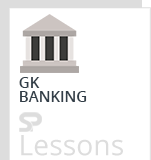 Introduction
Introduction
What is an Insurance? According to the dictionary and different insurance policies, Insurance is defined as “an arrangement by which a company or the state undertakes to provide a guarantee of compensation for specified loss, damage, illness, or death in return for the payment of a specified premium.” Thus, Insurance is a means of protection from financial loss. Insurance, in short, is a form of risk management, primarily used to hedge against the risk of a contingent or uncertain loss. The insurance provider is known as an insurer, insurance company, insurance carrier or underwriter. Insurance Awareness is an important section in several recruitment exams in India, primarily in the insurance sector.
Insurance Awareness Quiz 35 includes Questions and Answers related to the following topics: History of Insurance sectors in India, Insurance Organizations in India, Important Insurance Terms, Insurance Abbreviations & Insurance related information. Insurance Awareness Quiz 35 is extremely important for aspirants of Insurance related recruitments such as UIIC, OICL, LIC, HFL, AAO, etc.
 Quiz
Quiz
1. A type of car insurance contract under which insureds and its passengers’ are indemnified by their own insurance company in case of car accident, regardless of who caused the accident, is known as_____
-
A. Freebie Insurance
B. No Fault Insurance
C. Affectionate Insurance
D. Remedial Insurance
-
A. Particular Risk
B. Speculative Risk
C. Specific Risk
D. Covariant Risk
-
A. Rs 15 lakhs
B. Rs 10 lakhs
C. Rs 20 lakhs
D. Rs 5 lakhs
-
A. Immediate Claims Rectified
B. Insured Claims Rendered
C. Incurred Claims Ratio
D. Insurance Claims Rate
-
A. IRDAI
B. Insurance Company
C. Policy Holder
D. Insured
1. The premium for a Whole Life plan is always ________ than compared to the premium for an Endowment plan for the same age
-
A. Less
B. Half
C. Double
D. More
-
A. 75%
B. 100%
C. 150%
D. 90%
-
A. Mortality rates
B. Morbidity rates
C. Valuation rates
D. Policy rates
-
A. Any individual
B. spouse
C. children
D. parents
-
A. Special Protection Insurance
B. Parasol Insurance
C. Patronage Insurance
D. Umbrella Insurance
1. BCAR is a rating agency that focuses on the insurance industry. What does R stands for in BCAR?
-
A. Ratings
B. Ratio
C. Relativity
D. Rate
-
A. Covered Ratio
B. Incurred Claim Ratio
C. Preference Ratio
D. Solvency Ratio
-
A. Horizon Risk
B. Uninsurable Risk
C. Concentration Risk
D. Longevity Risk
-
A. Premium Tax
B. Insurance Tax
C. Policy Tax
D. Indirect Tax
-
A. Time annuity
B. Fixed annuity
C. Pure Life annuity
D. Subsequent annuity



